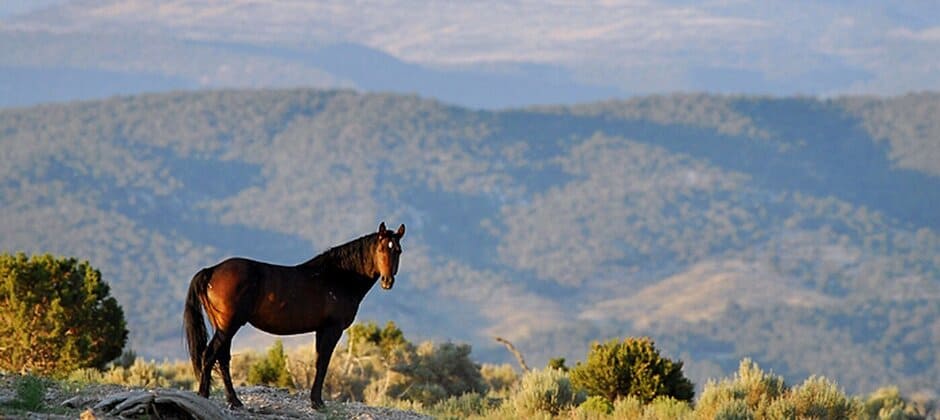Share this article
The Wildlife Society calls to reduce wild horse and burro populations
The Wildlife Society submitted written and oral testimony to the National Wild Horse and Burro Advisory Board, calling on the Bureau of Land Management to reduce wild horse and burro population levels as quickly as possible.
The advisory board met virtually in late September to discuss the federal government’s management of select free-roaming horses and burros — both on public lands and in pastures — that are designated ‘wild’ under federal law.
“The ongoing and increasingly negative ecological effects of wild horses and burros impact the ability of wildlife professionals to do their own public mandate of conserving native wildlife species on public lands,” said Keith Norris, AWB®, TWS’ director of wildlife policy and communications, during oral testimony to the board. He also encouraged the federal agencies to “enhance their collaboration with state wildlife agencies, as required by the act, when making management decisions” for wild horse and burro herds.
The National Wild Horse and Burro Advisory Board is a federal advisory committee comprised of stakeholders representing a diverse range of interests. It provides advice and recommendations to the Bureau of Land Management and the U.S. Forest Service as the agencies carry out their responsibilities under the 1971 Wild Free-Roaming Horses and Burros Act.
“As on-range populations continue to dramatically exceed ecologically sustainable levels and the health of public lands continues to degrade, The Wildlife Society is increasingly concerned about the administration’s lack of progress on effectively reducing populations,” the Society’s said in a written testimony. “The continued overpopulation of federally managed horses and burros on public lands threatens the ecological integrity of the rangelands while unduly impacting the ability of wildlife professionals to effectively manage and promote healthy rangelands and native species for future generations.”
The Society’s testimony highlighted concerns regarding fertility control measures, noting that these measures, whether temporary or permanent, only slow population growth, but do not actively reduce population numbers. The Wildlife Society recommends on-range numbers be reduced as quickly as possible to allow rangeland ecosystems to recover.
William Perry Pendley, BLM’s deputy director for policy and programs and de facto director of the agency, spoke to the advisory board during its meeting about the long-awaited report to Congress that BLM submitted earlier this year. He provided information about the agency’s proposal to reduce the wild horse and burro population to a sustainable level over the next 15 to 18 years using various nonlethal methods. Pendley called the report’s methods innovative and emphasized that long-term fertility control methods — currently under development — combined with increased removals could help reduce the numbers of the wild horses and burros on federal rangelands. The most recent population estimates from March 2020 show there are about 95,000 horses and burros on BLM lands — nearly four times above what the rangelands can sustain.
Under the BLM’s new plan, up to 20,000 horses and burros would be removed from the range each year, with another 9,000 treated with fertility control and returned to the range annually. Pendley noted that the agency is currently testing a fertility control measure that could render mares infertile for three years or more.
The Wildlife Society has regularly advocated for federal agencies to reduce free-roaming horse and burro populations on public lands. As a non-native invasive species, horses and burros compete with native wildlife and damage their habitats.
Header Image: The Wildlife Society submitted comments recently to the National Wild Horse and Burro Advisory Board regarding management of wild horses and burros. Credit: Pam Nickoles








